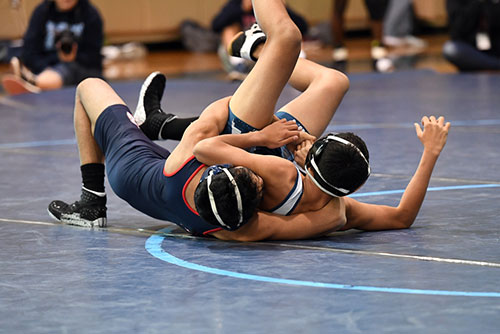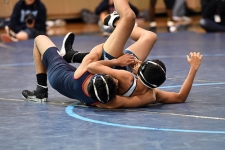
If your child is a wrestler, they might be prone to injuries, such as bruises, cauliflower ear, or scrapes. Some of the most common types of orthopaedic injuries are to the shoulder or knee. These often are more severe than other types of wrestling injuries and frequently require surgeries and other treatments. Keep reading to learn how to prevent and treat common wrestling injuries.
Head and Face Injuries
One type of injury near the face is known as cauliflower ear. This happens when the ear structure becomes extremely bruised. As a result, the injury may need to be drained, and the ear might need to be wrapped in a cast type of material. That will help retain the ear’s shape after the swelling subsides.
It is hard to avoid this type of injury. However, you will want to consider having your child wear headgear to help prevent it. Choosing a headgear with a front pad can help minimize any impact on the forehead and helps prevent concussions, too. Your child should also wear a mouthguard, which can help to prevent a tooth or tongue injury.
Prepatellar Bursitis
This condition happens when the sac, or bursa, in the front of the kneecap, or patella, becomes inflamed. This can cause sharp pain and even swelling. If your child develops pre-patellar bursitis, they may need to take anti-inflammatory medication, such as ibuprofen – your orthopaedic surgeon will be able to give you exact guidance on the type and timing of medication to take, if needed. The area should also be rested. Moving forward, you’ll want to look for knee pads that are designed for people who have pre-patellar bursitis to minimize the impact to the front of their knee.
Injuries to the Ligaments
During wrestling, your child can also accidentally damage their knee ligaments. This often happens to either the inside or the outside of the knee. Often, the leg will twist outward from their body with this type of injury. If they have a first-degree sprain, you can treat it with the RICE method. That means:
- Rest
- Ice
- Compression
- Elevation
Once the pain has subsided, your child should be able to return to the sport. However, if they have a second- or a third-degree sprain, you should seek care from an orthopaedist, as surgery may be required. To prevent an injury, your child should keep their hamstrings and quadriceps strong, and it is also a good idea to do flexibility exercises in their lower extremities.
Skin Infections
Many wrestlers are familiar with infections like MRSA (Methicillin-resistant Staphylococcus aureus), which are common in sports like wrestling due to close contact with other athletes as well as the mats they practice and wrestle on. It is critical to prevent infections because, if one team member has an infection, it can quickly spread to other teammates due to the large amount of skin-to-skin contact required by the sport. Other infections, like impetigo and ringworm, are also common in the wrestling world. There are several ways to prevent these types of infections, including:
- Showering before and after participating in a match or practice session.
- Wearing clean clothes before practicing and washing them after.
- Using antiseptic solutions to sanitize the mats after each practice.
If your child does get an infection, you should see your doctor so that treatment can begin immediately. With the OK from your physician, your child can continue to perform drills and do conditioning workouts during treatment. However, it is important that they avoid bodily contact with any other team member until the infection is no longer an issue.
Closing Thoughts
Wrestling can cause many types of injuries. However, the physical therapists and orthopaedic surgeons here at Prairie Orthopaedic & Plastic Surgery, PC. in Lincoln, Nebraska, are here to help, so feel free to reach out to us with any questions or to schedule an appointment! You can reach us at or visit https://www.prairie-ortho.com/.

